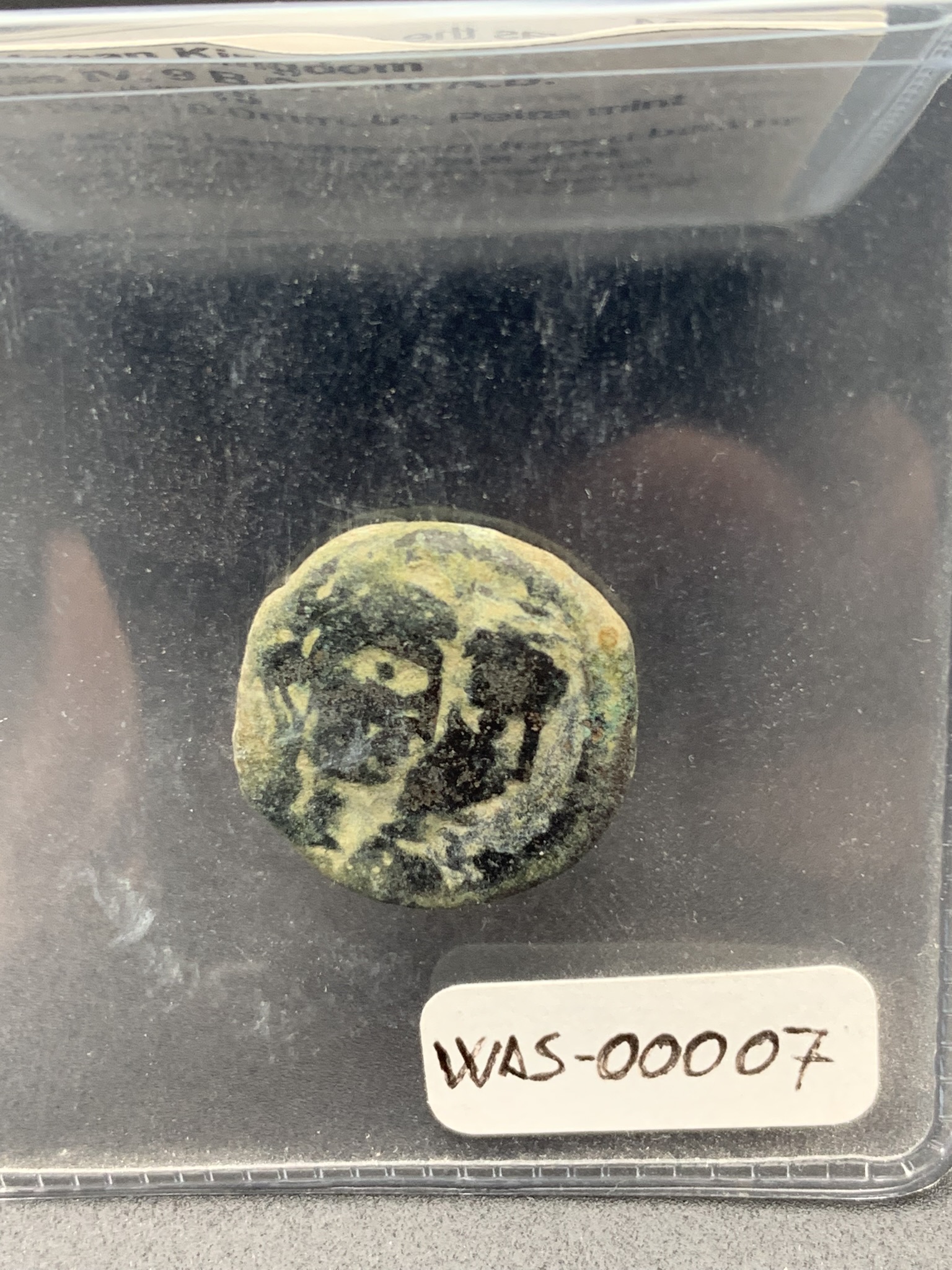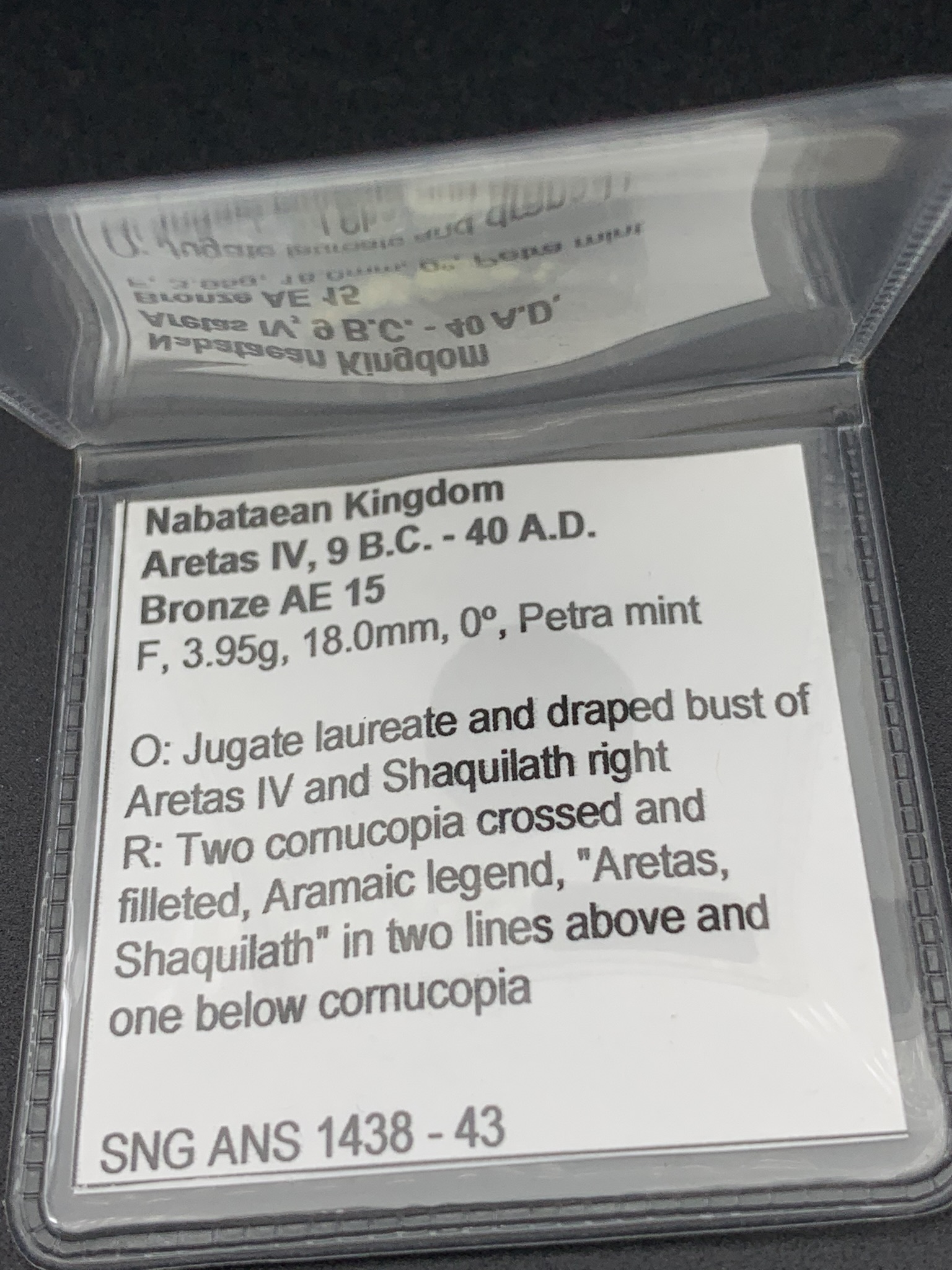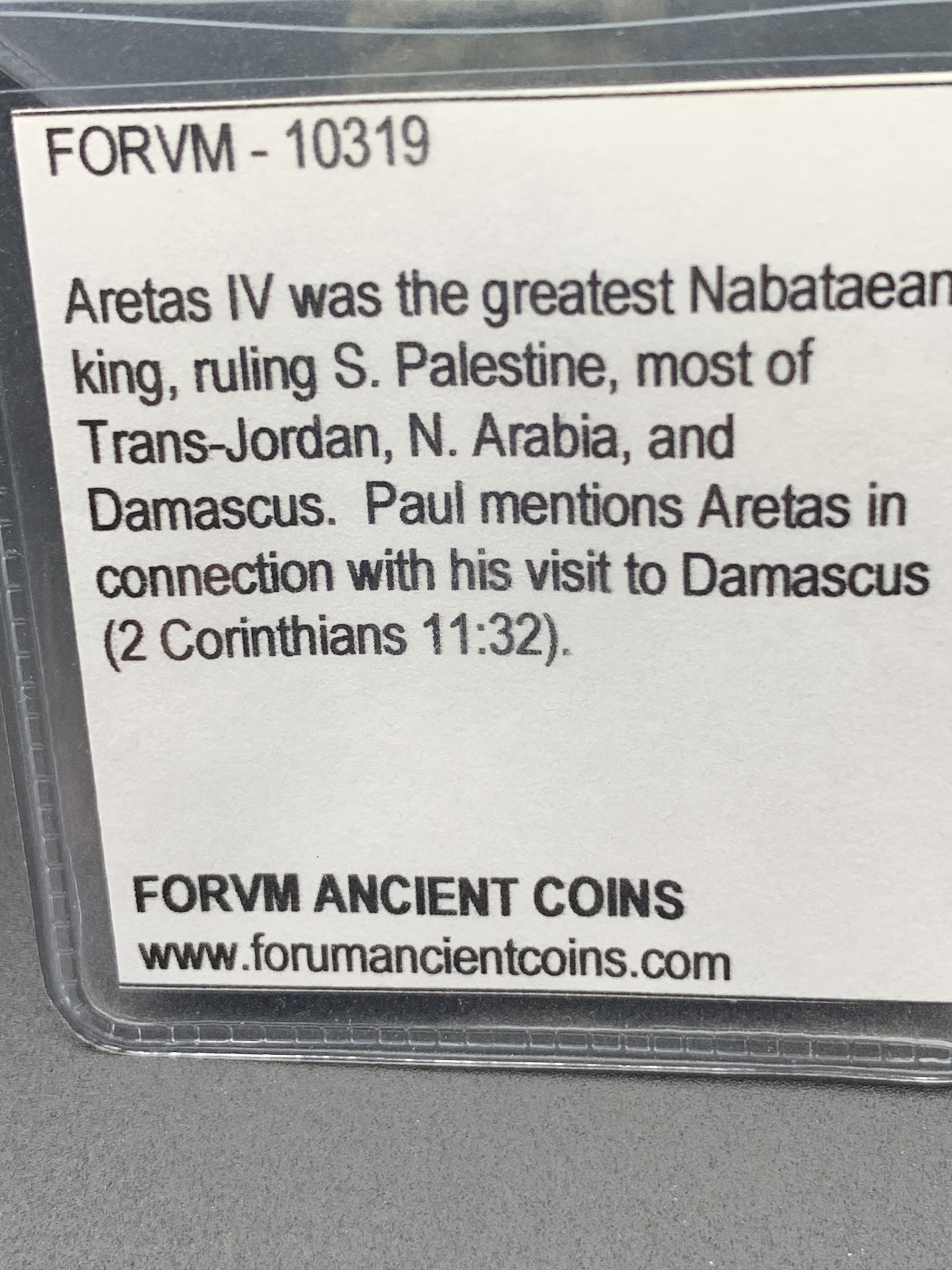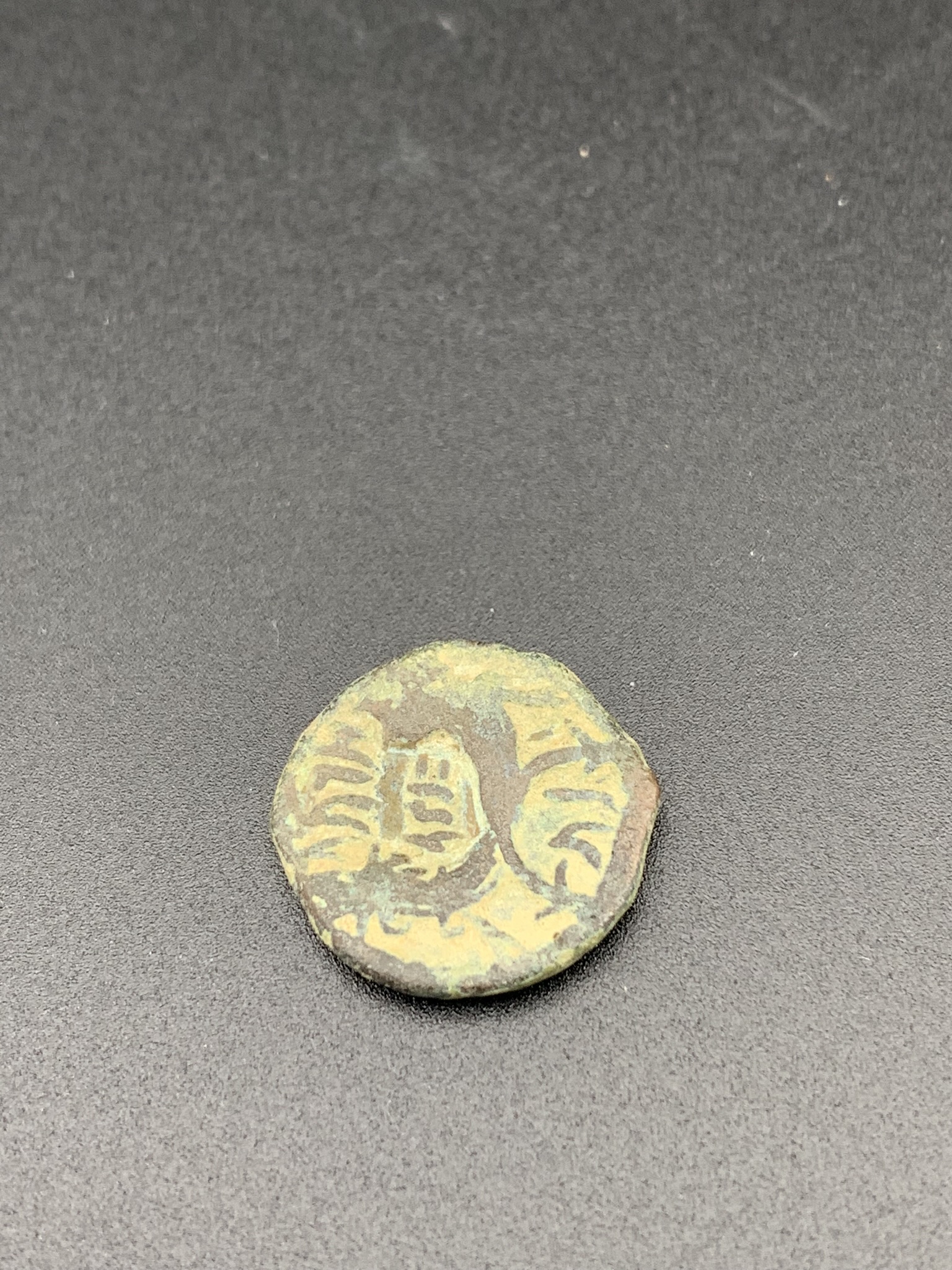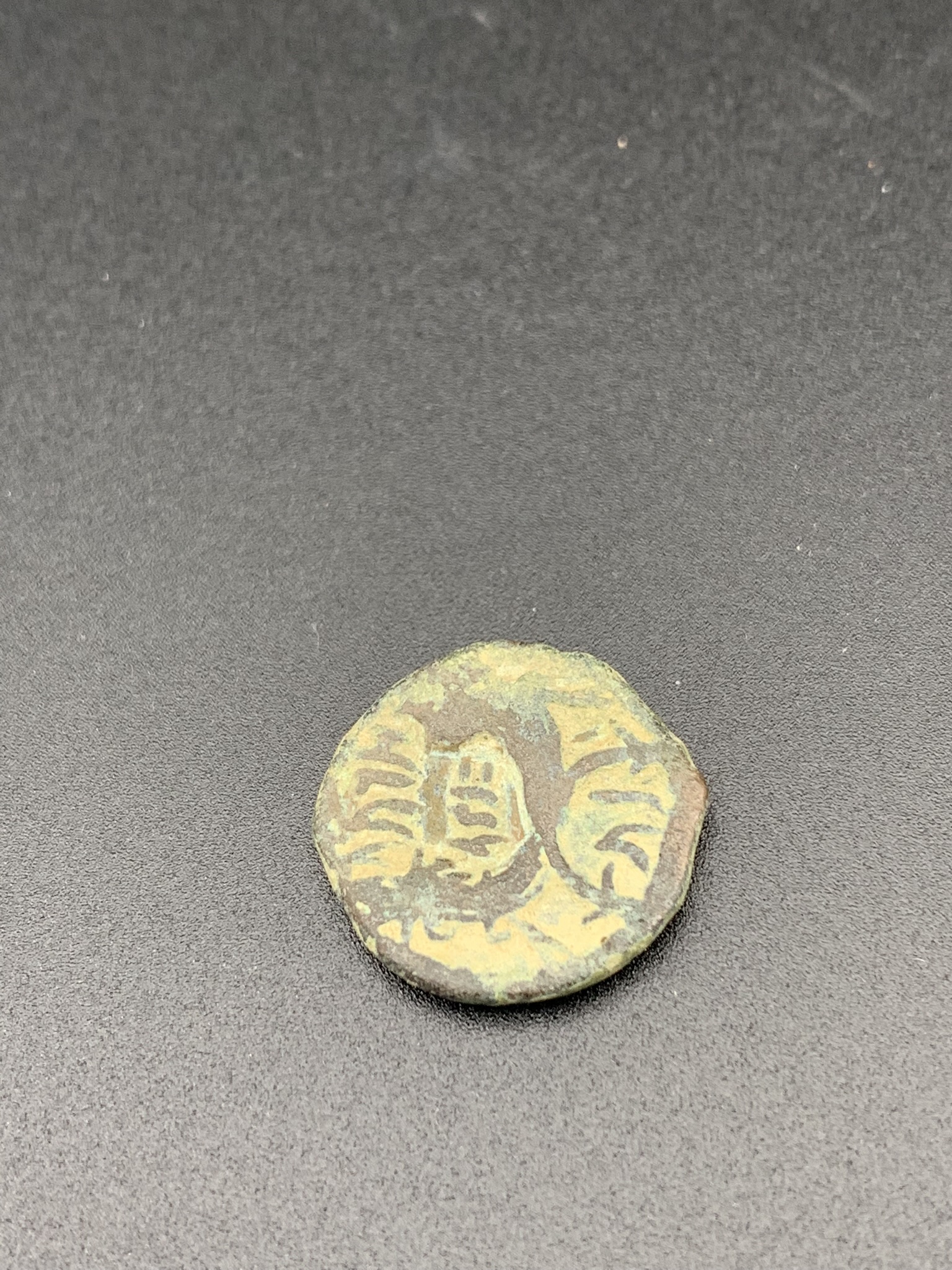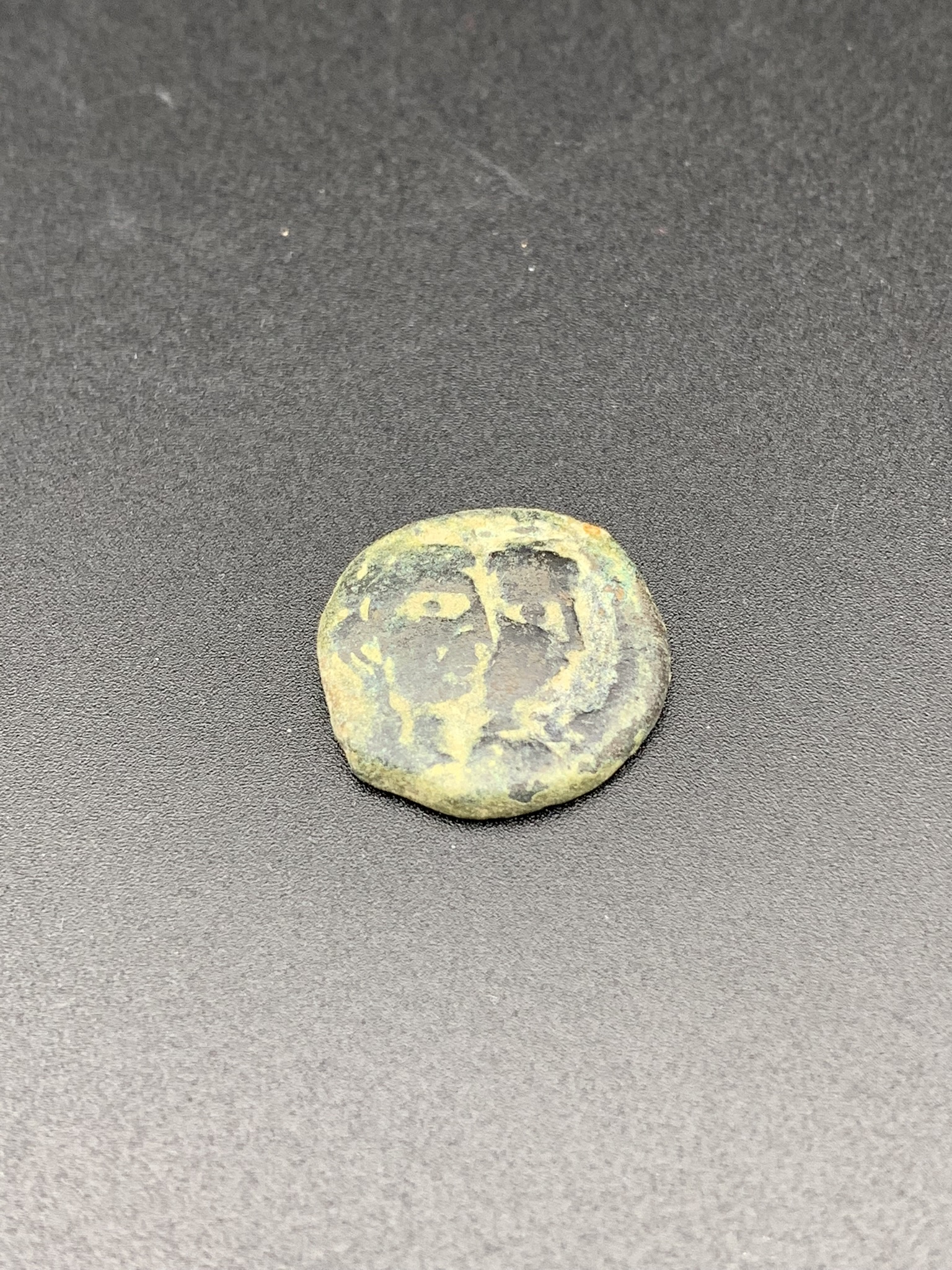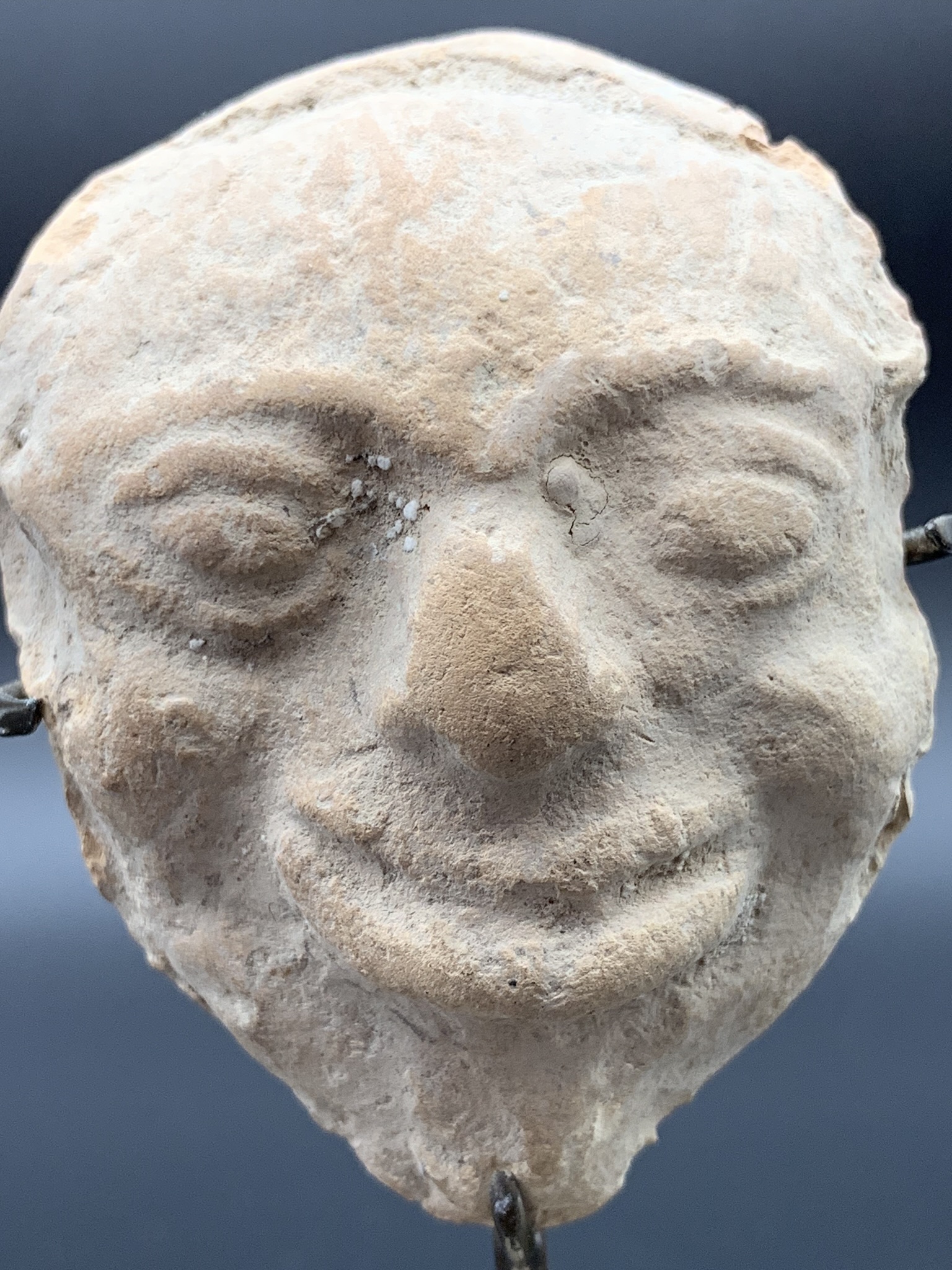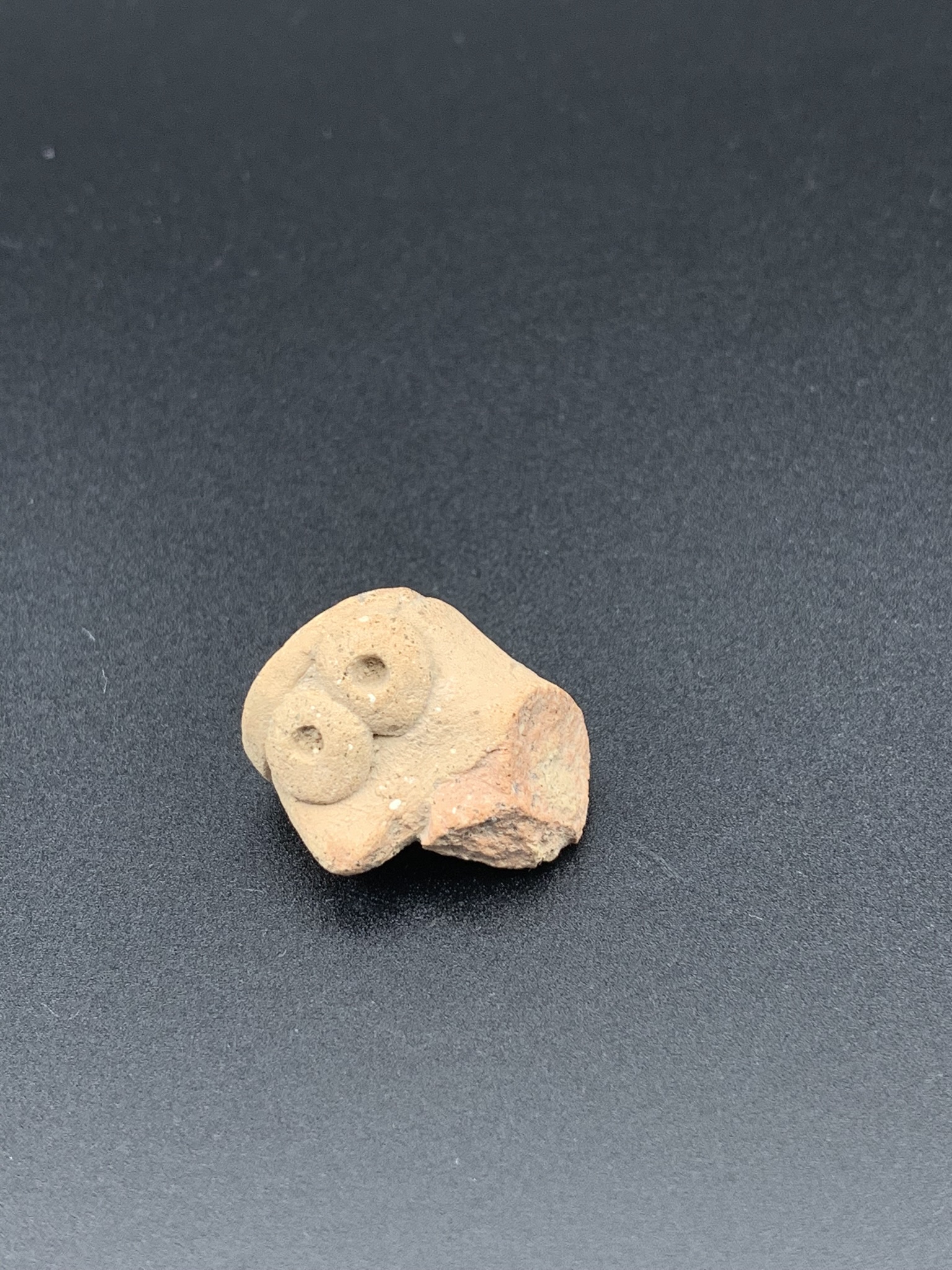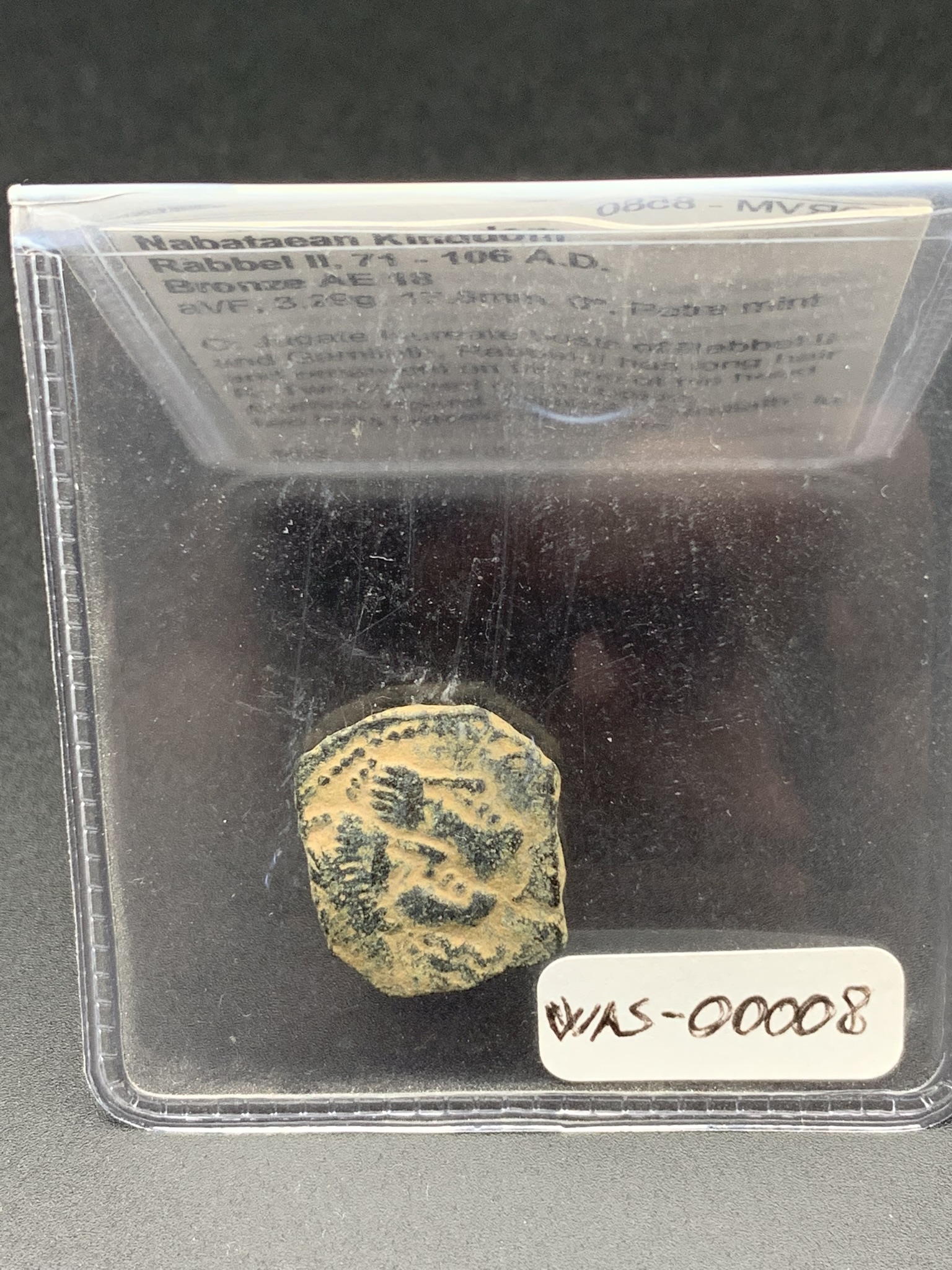Moneda Nabatea, Aretas IV, 9 a.c. – 40 d.c.
€9,00
Moneda Nabatea, Aretas IV, 9 a.c. – 40 d.c.
- Procedència: Nabatea
- Època: 9 a.c. – 40 d.c.
- Tamany: 3.95g, 18.00mm
- Material: Bronze
- Estat: Desgastat
- Comprat a: Forum Ancient Coins
- Venedor: Forum Ancient Coins
- Preu: 9,00$
- Certificat d’autenticitat: No
- Data: 18-gen-2005
Codi: WAS-00007
Moneda Nabatea, Aretas IV, 9 a.c. – 40 d.c.
- Procedència: Nabatea
- Època: 9 a.c. – 40 d.c.
- Tamany: 3.95g, 18.00mm
- Material: Bronze
- Estat: Desgastat
- Comprat a: Forum Ancient Coins
- Venedor: Forum Ancient Coins
- Preu: 9,00$
- Certificat d’autenticitat: No
- Data: 18-gen-2005
Descripció detallada
10319. Bronze AE 15, SNG ANS 1438 – 43, F, Petra mint, 3.95g, 18.0mm, 0º, observe jugate laureate and draped bust of Aretas IV ans Shaquilath right; reverse two cornucopia crossed and filleted. Aramis legend, “Aretas, Shaquilath” in two lines above and below cornucopia.
Aramic is read from bottom right to top left and vowels are unwritten, The letters of the reserve legend read, HRRT/ SQY / LT
Més informació
https://www.ancient.eu/Kingdom_of_Nabatea/
https://nabataea.net/explore/cities_and_sites/petra/
https://www.omniglot.com/writing/nabataean.htm
https://www.metmuseum.org/toah/hd/naba/hd_naba.htm
NABATEAN
The Nabataeans, also Nabateans, were an Arab people who inhabited northern Arabia and the Southern Levant in antiquity. Their settlements, most prominently the assumed capital city of Raqmu (present-day Petra, Jordan),[1] gave the name of Nabatene to the borderland between Arabia and Syria, from the Euphrates to the Red Sea. Their loosely controlled trading network had no securely defined boundaries in the surrounding desert; it focused primarily on strings of oases under their control, where agriculture was intensively practiced in limited areas, and on the routes that linked them together. They maintained territorial independence from their emergence in the 4th century BC until Nabataea was conquered by Trajan in 106 AD, annexing it to the Roman Empire. Nabataeans’ individual culture, easily identified by their characteristic finely potted painted ceramics, was adopted into the larger Greco-Roman culture. They were later converted to Christianity during the Byzantine Era. Jane Taylor, a writer, describes them as “one of the most gifted peoples of the ancient world”.
ARETAS IV
Aretes IV Filopàter —en àrab al-Hàrith; en grec Αρέτας; en llatí Aretas— fou rei nabateu d’Aràbia Pètria (9 aC-40 dC). Fou sogre d’Herodes Antipes de Judea.
Herodes Antipes va repudiar a la seva dona per poder-se aparellar incestuosament amb Heròdies, la dona del seu germà Herodes Filip. En represàlia Aretes IV va fer la guerra al seu gendre i el va derrotar. Herodes va demanar ajut a Roma i Vitel·li, governador de Síria, va rebre l’ordre de castigar Aretes i va marxar contra Petra, però pel camí es va assabentar de la mort de Tiberi (37) i va cancel·lar l’expedició. L’any 31 Aretes encara dominava Damasc. Aquest Aretes és esmentat com a sobirà d’un dels territoris creuats per Eli Gal, en temps d’August.


